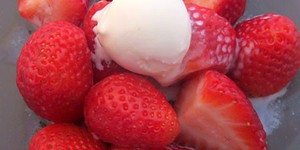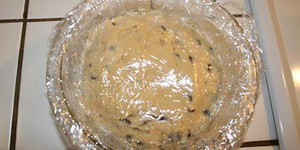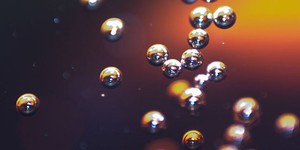Third Grade, Cooking & Food Science Science Projects (38 results)
Who doesn't love food? It's fun to make, it's fun to eat, it's fun to ...study? That's right! There is a lot of science that goes into the everyday foods that you love. Explore questions such as how baking ingredients work, how and why certain ingredients mix well together, and why people's tastes differ.
|
Select a resource
Coding Projects
Sort by
|
Here is a riddle for you: what kind of rock grows? The answer is: rock candy! This delicious candy is actually crystallized sugar and you can "grow" it from a sugar-water solution. In this science fair project you'll learn how to grow your very own rock candy and determine if using seed crystals changes the growth rate of your sugar crystals.
Read more
You might have heard the saying "The eyes eat before the mouth." The appearance of food, especially its color, certainly affects how we perceive its taste. But can your eyes actually change the way you taste something? In this science project, you will find out by investigating how people perceive the taste of different colored apple juice. How do you think color affects taste?
Read more
New
Have you ever walked next to your favorite ocean, lake, or creek and seen plastic waste everywhere? Have you ever thought about how much plastic breaks down into microplastics and pollutes waterways? Scientists are coming up with new ways to remove these microplastics from our waterways, and now you can test them out for yourself at home.
Read more
Have you ever wondered why apple slices turn brown once you cut them, or why a yellow banana gets dark spots over time? In this project you will find out why this happens, and how you can keep your apple slices looking fresh!
Read more
Imagine if instead of spooning up a bowl of soup, a container of yogurt, or a cup of pudding you could just pick up and pop in your mouth a round, mess-free, ball-like blob of one of those. It might feel like snacking rather than eating a meal! In this food science project you can try exactly that. The simple step-by-step directions will lead you through trying a fun cooking technique called reverse spherification to turn yogurt into semi-solid balls, which are called "raviolis." How do you…
Read more
Would you like to add an unusual twist to a yummy food like ice cream? In this kitchen science project, you will make mind-bending hot ice cream. You will experiment with, and of course munch on this gastronomic treat. It is easy, it is delicious, and it is fun! Go ahead and try it out!
Read more
New
How do you feel right now? Do you remember how you felt a few hours ago? How about yesterday or last Wednesday? What if you could track your emotions throughout the day and use this information to help improve your mood and well-being? In this science project, you will program a simple, pocket-sized device that you can carry around with you to log your feelings whenever you want or on a specific schedule.
Read more
How much iron is in your cereal? In this experiment, you will devise a way of testing foods for supplemental iron additives. Then you will use your design to test different breakfast cereals to see how much iron they contain. Which brand of cereal will have the most iron in it?
Read more
One of America's favorite snacks is potato chips. Although potato chips are very tasty, some varieties are not very healthy for you. A typical 1-ounce (oz.) serving of a well-known national potato chip brand contains 150 calories, 90 of which are from fat. How greasy are your favorite potato chips? Try this science fair project, and you'll get a visual understanding about how much oil a potato chip can hold.
Read more
If you love cooking, decorating cakes, or making edible table decorations, this is a project for you! You will compare three different recipes for rice paper and discover the recipe that works best for your application!
Read more
Have you ever bitten in to a cookie and thought, "this is the best cookie in the whole wide world!"? Was it one you made at home? In this science fair project, discover if you can perfect the taste of your favorite cookie right in your own kitchen!
Read more
Carbonated bevarages are quite popular in the United States (despite the health risks of drinking too much of the sugary ones). Many people love their bubbly, fizzy flavors. But how do the bubbles, fizz, and taste get into the water? In this cooking and food science project, you will work with baking soda, citric acid, and sweetener to create a your own soda pop. Once you develop your recipe, try it out on your friends and family. Who knows? You might create the next soda pop sensation!
Read more
|
















